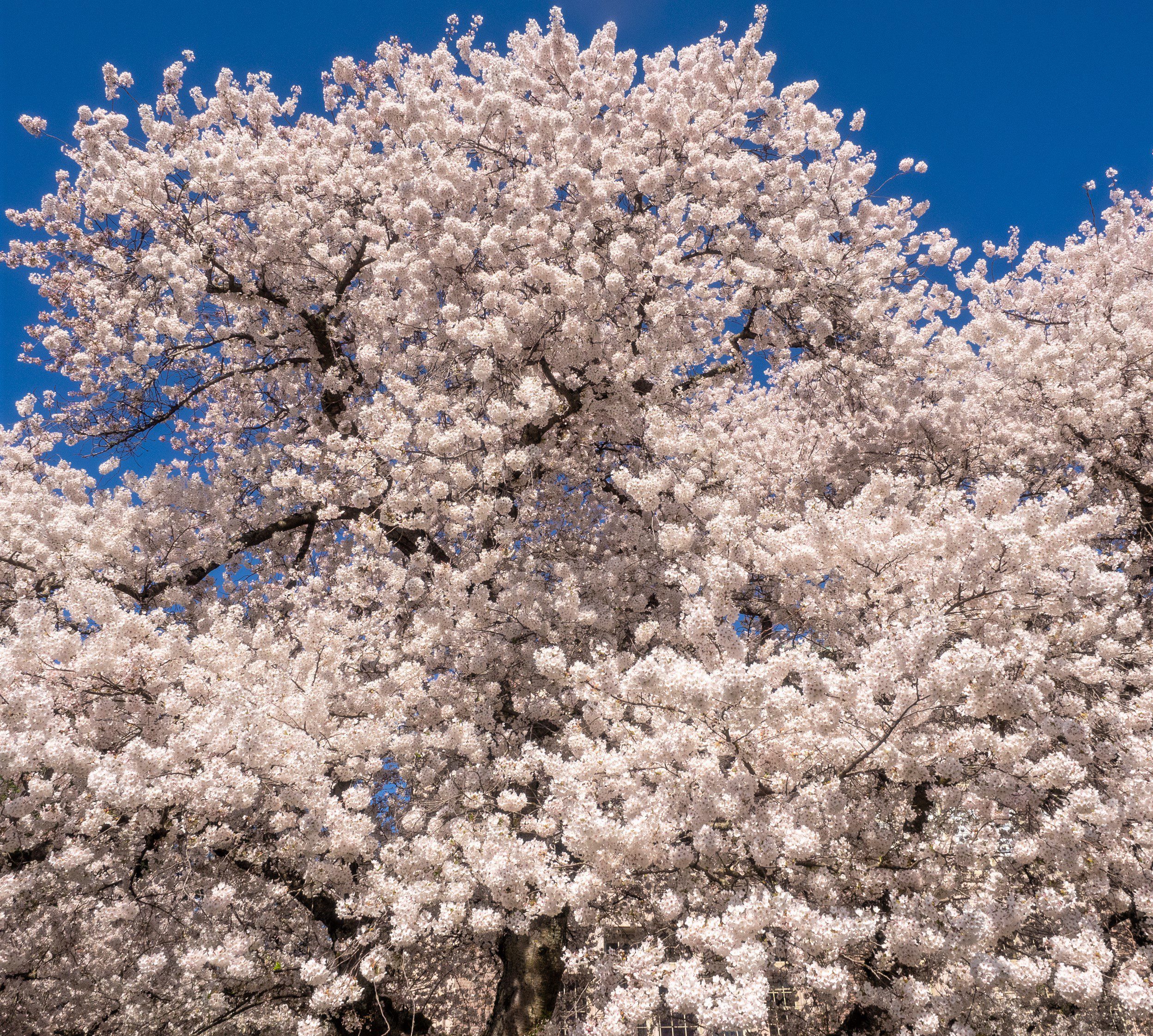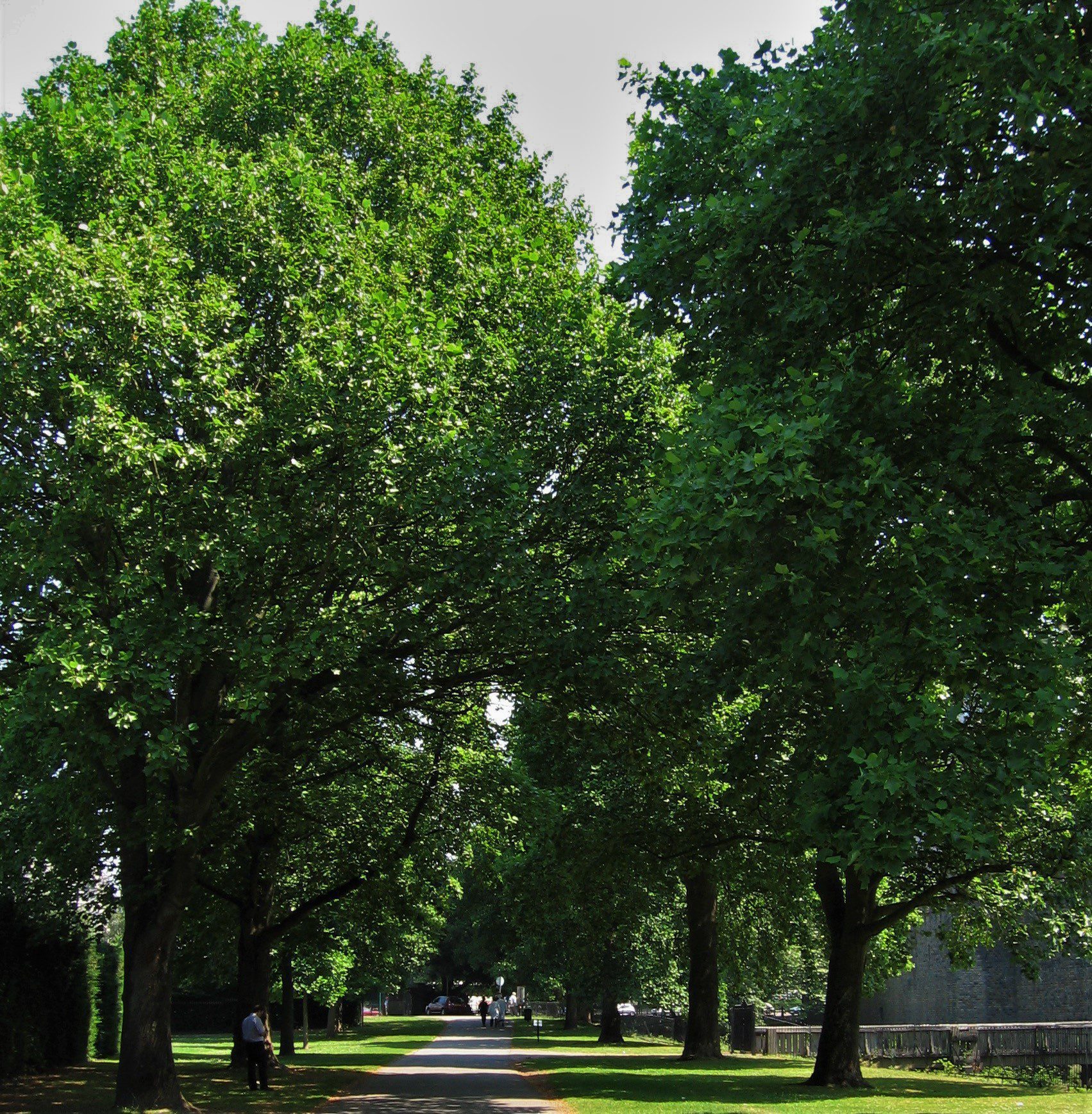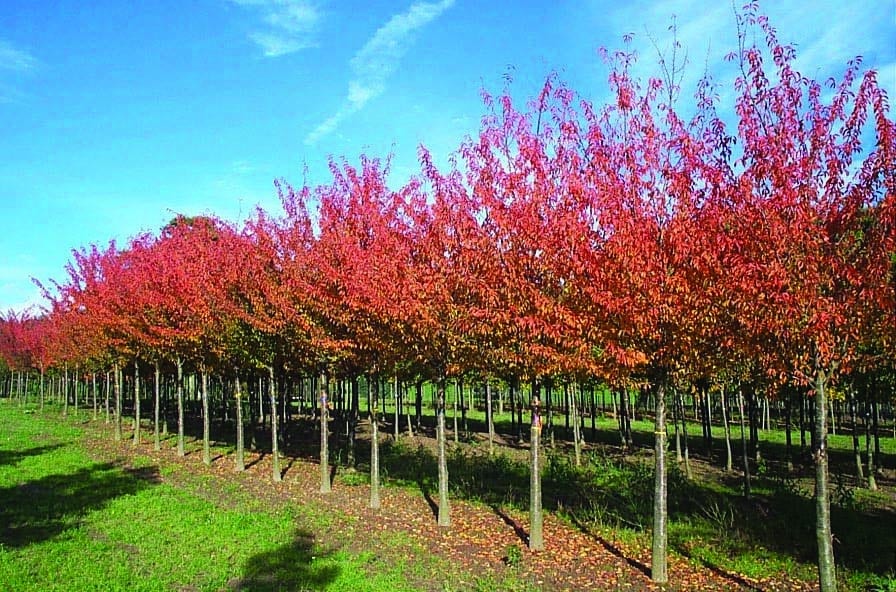In the world of landscape design, creating outdoor spaces that support biodiversity is becoming increasingly important. As urbanisation expands and natural habitats shrink, the role of commercial landscapes, parks, and larger estates in providing refuge for wildlife has never been more critical.
Trees, in particular, are vital assets in any landscape designed to support biodiversity. They offer shelter, food, and nesting opportunities for a wide variety of species, from insects and birds to small mammals. For designers and landscapers looking to meet both ecological and aesthetic goals, choosing the right trees can transform a site into a thriving ecosystem while still delivering visual and structural appeal.
Whether you’re designing a public park, restoring a woodland area, or adding green infrastructure to an urban project, the trees you select will have long-lasting effects on local wildlife. A well-considered planting scheme can offer year-round benefits. For example, spring blossoms can attract essential pollinators, while autumn fruits and seeds provide sustenance for animals through the winter months.
Some species even improve soil health, making them beneficial to the surrounding environment and helping to support the longevity of other plantings.
When selecting trees for a project, it’s important to balance environmental benefits with practical concerns such as soil conditions, space constraints, and long-term maintenance. Large species, like the iconic Quercus robur (English Oak), are best suited to expansive spaces such as estates, woodlands, or large public parks, where they can grow to their full potential. On the other hand, more compact trees like the Malus ‘Evereste’ (Crab Apple) or Sorbus aucuparia ‘Streetwise’ (Rowan) are ideal for urban greening projects and smaller commercial developments where space may be limited.
In this guide, we explore some of the best trees to plant for wildlife in the UK. Each tree offers distinct ecological benefits, from supporting pollinators to providing vital food sources for birds and mammals. For designers and landscape professionals, these trees not only enhance biodiversity but also add aesthetic value and structural integrity to a variety of project types, from urban developments to rural restoration schemes.
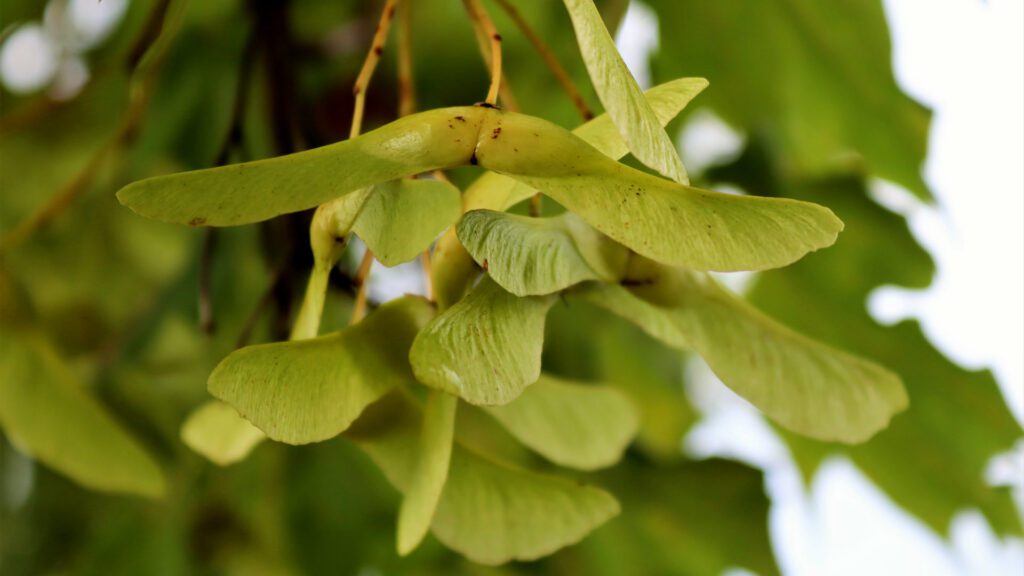
Acer campestre (Field Maple)
The Field Maple, Acer campestre, stands out as the UK’s only native maple species, making it a cornerstone for biodiversity projects. Its adaptability and hardiness make it suitable for a variety of planting schemes, from large-scale hedging projects to natural woodland restoration efforts. This versatility ensures that it can thrive in different soil conditions, including clay, loam, and sandy soils, which is crucial for landscapers who may be working with challenging or varied terrains.
What makes the Field Maple particularly attractive to landscape professionals is its dense canopy of foliage. This offers invaluable shelter to a wide range of species, including birds and beneficial insects. Birds like robins, tits, and finches find refuge in its branches, while insects such as aphids and caterpillars, which are vital to the food chain. This ecological diversity creates a balanced environment where predator and prey relationships can flourish, thus supporting a healthy ecosystem within both rural and urban projects.
Aesthetically, the Field Maple is equally valuable, especially when used in public parks or commercial landscapes where visual appeal is important. Its foliage turns a striking yellow in autumn, adding seasonal interest to any setting. This vibrant display ensures that the tree remains a focal point year-round, providing landscapers with a dynamic feature that enhances the site’s visual appeal. When used in hedging or larger tree belts, the Field Maple offers structure and definition to a site, contributing to privacy, wind reduction, and visual screening, essential elements in many commercial and residential developments.
In terms of wildlife, the tree’s value extends well beyond shelter. The sap, seeds, and bark of the Field Maple attract birds, including species that are increasingly at risk due to habitat loss. The protection this tree offers makes it a must-have in any project looking to integrate sustainable planting that supports local wildlife populations. For designers and architects, Acer campestre is an excellent choice for creating multi-functional spaces that blend beauty, biodiversity, and practicality.
Alnus glutinosa (Common Alder)
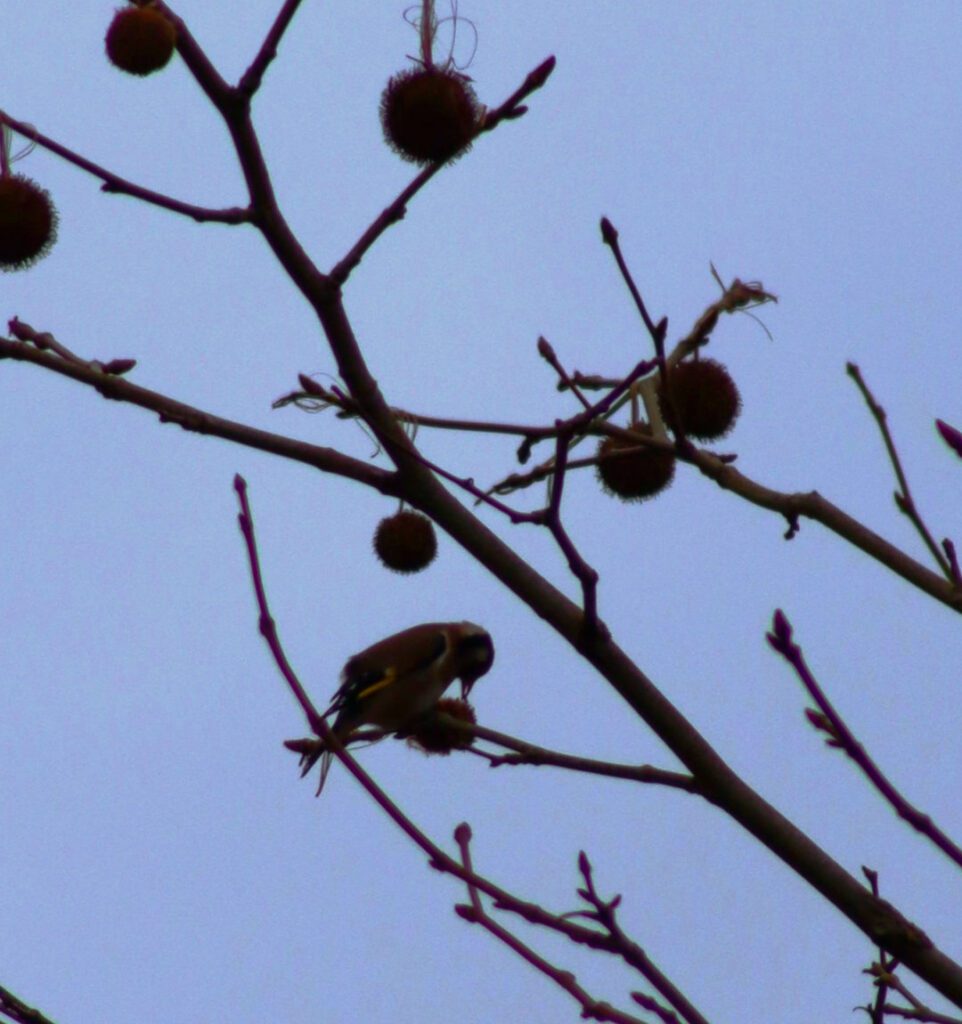
The Alnus glutinosa, or Common Alder, is a key player when it comes to enhancing biodiversity in wetter areas. For landscape architects working on projects near rivers, ponds, or marshlands, this tree is invaluable due to its ability to thrive in damp, poorly drained soils where many other species would struggle. As a native wetland tree, it is well-suited for riparian zones, where water quality and biodiversity are often priorities for developers and environmental planners.
The Common Alder’s contribution to wildlife is significant. In early spring, its yellow catkins appear, providing a rich food source for birds such as finches and siskins. These birds rely on the catkins as an essential food supply before other plant species begin to bloom.
Additionally, the tree supports a range of insect life, including the Alder beetle and various moth species, which in turn provide food for birds and other predators. Its leaves decompose quickly, adding nutrients to the soil and supporting aquatic ecosystems when planted near water bodies.
One of the Alder’s most remarkable qualities is its ability to improve soil health through nitrogen fixation. This process involves the tree working with a specific type of bacteria found in its root nodules to convert atmospheric nitrogen into a form that can be absorbed by plants. As a result, the soil becomes richer in nutrients, benefiting surrounding plants. This makes the Common Alder a fantastic option for projects focused on ecological restoration, particularly in areas where soil fertility needs to be improved. For landscapers this ability to regenerate soil health reduces the need for additional fertilisation, lowering maintenance costs and enhancing the long-term sustainability of the site.
From a design perspective, the Common Alder brings both structural and aesthetic value to wetland and riparian landscapes. Its upright form and fine, rounded leaves offer a delicate contrast to other riparian plants, making it a visually appealing choice. When used in combination with other native wetland species, it can help stabilise riverbanks and prevent soil erosion, making it a practical solution in flood-prone areas.
For site planners and landscape professionals looking to boost biodiversity while addressing ecological challenges like soil degradation or waterlogging, Alnus glutinosa offers a well-rounded, sustainable solution. Its ability to improve both soil health and wildlife diversity makes it an essential component in environmentally conscious landscape designs.
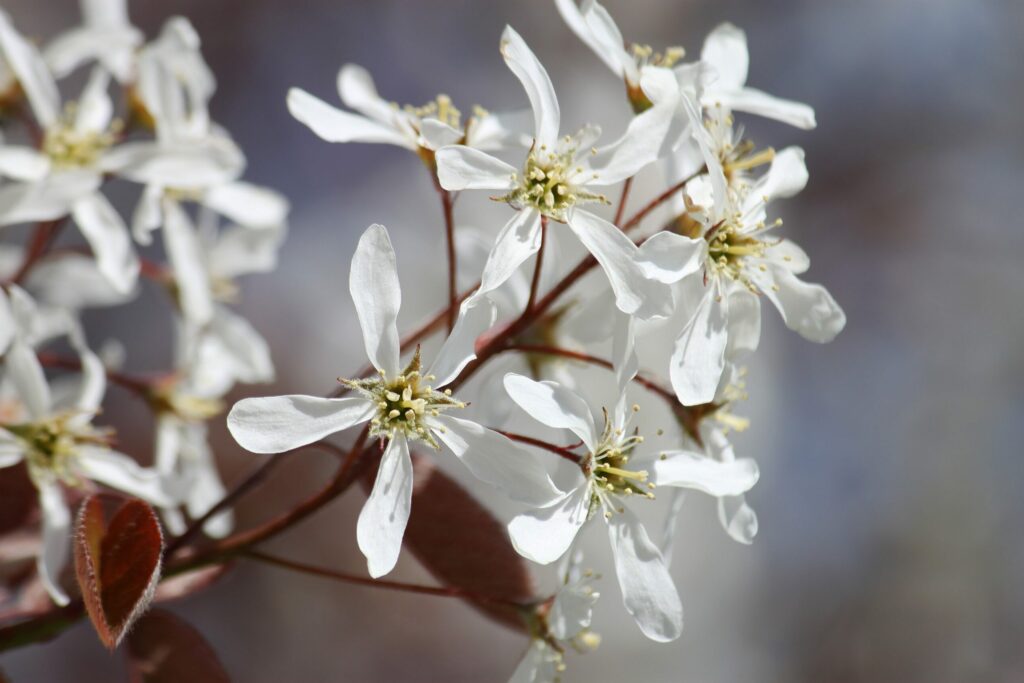
Amelanchier lamarckii (Snowy Mespilus)
For landscapers working on urban projects or smaller estates, Amelanchier lamarckii, commonly known as Snowy Mespilus, offers a compact yet impactful solution. Its moderate size, typically reaching around 5-10 metres, makes it ideal for projects where space is limited, yet there is still a need for a tree that delivers both ornamental value and wildlife benefits. It thrives in a range of soil types, from loam to clay, making it adaptable for different urban and suburban environments.
The ecological value of Amelanchier lamarckii extends throughout the seasons, making it a solid choice for year-round biodiversity. In early spring, its delicate white blossoms emerge, becoming a key food source for pollinators, especially bees and butterflies. This is particularly important in urban environments, where pollinators often struggle due to a lack of suitable habitats. By planting Snowy Mespilus, you provide an essential resource for these insects during a crucial time in their life cycle. For designers aiming to create pollinator corridors or enhance urban biodiversity, this tree plays an important role.
As the seasons progress, the tree offers further value to wildlife. By late summer and early autumn, it produces small, dark berries that are irresistible to birds, particularly species like thrushes, blackbirds, and starlings. These berries offer an important food source as birds prepare for migration or the upcoming winter months, supporting the wider ecosystem. For smaller commercial developments, housing estates, or urban greening projects, Amelanchier lamarckii provides a manageable yet impactful way to boost local wildlife populations.
In terms of aesthetics, Snowy Mespilus is equally beneficial. Its compact size and striking seasonal displays of flowers, berries, and autumn colour make it a versatile choice for enhancing the visual appeal of any space, from public squares to private courtyards. Its graceful structure and multi-stemmed form add an architectural element to landscapes, offering a focal point that changes with the seasons. For designers looking to blend aesthetics with ecological benefits, Amelanchier lamarckii is a well-rounded choice that brings a dynamic and multi-seasonal character to any project.
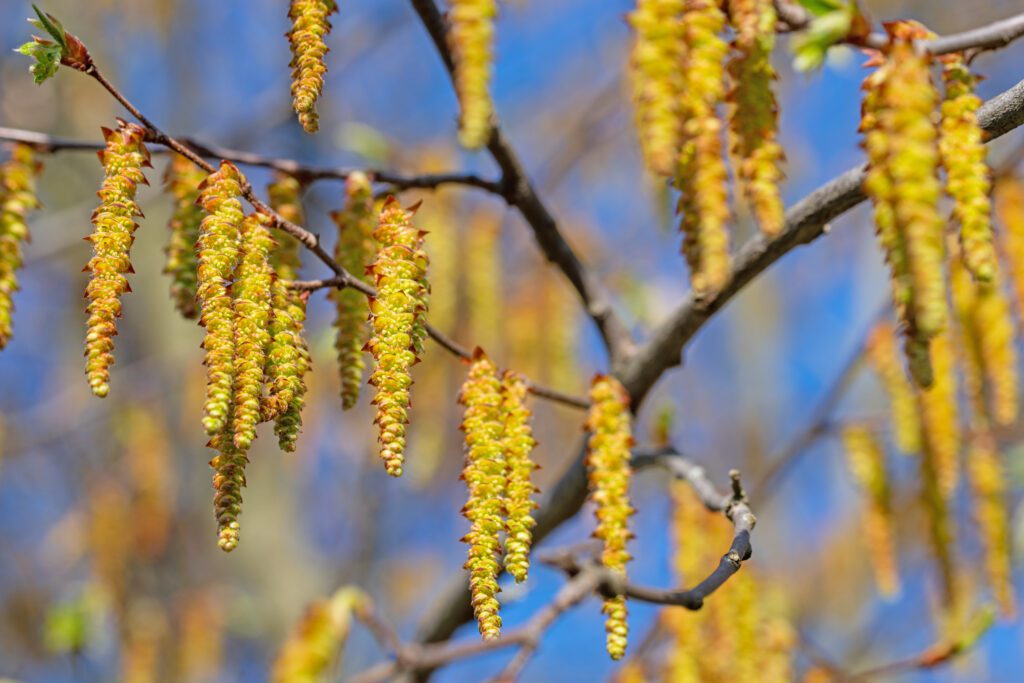
Carpinus betulus (Hornbeam)
When designing landscapes for long-term durability and biodiversity support, Carpinus betulus, or Hornbeam, is a reliable and robust choice. It is particularly suited to larger projects, such as public parks, estates, and woodland restorations, where its sturdy structure and year-round ecological contributions are highly valuable. Reaching heights of up to 16 meters, Hornbeam can serve as a majestic standalone tree or as a key component in boundary hedging, adding both aesthetic and ecological value to a variety of settings.
One of the Hornbeam’s standout features is its dense, textured bark, which offers excellent shelter for insects. Many species of insects, such as caterpillars and beetles, find refuge in its rough crevices, which in turn attracts insect-eating birds like woodpeckers and nuthatches. This bark not only provides habitat but also encourages a balanced ecosystem, where both insects and their predators thrive. For landscapers aiming to create habitats that support a diverse food web, Carpinus betulus is an essential species.
The Hornbeam’s winged seeds, known as samaras, are another key asset for wildlife. These seeds are a critical food source for birds during the autumn and winter months, when other food supplies are dwindling. For designers focusing on long-term sustainability, this is an important feature, as the Hornbeam offers a natural food supply that supports bird populations throughout the colder months. Additionally, its dense foliage provides cover for nesting birds and small mammals, adding another layer of ecological value.
From a design perspective, Hornbeam’s versatility is highly attractive. When used as a hedge, its dense foliage provides structure and privacy, making it suitable for use in formal landscapes or as a natural screen in larger developments. Its durability and resilience also make it a great choice for challenging environments, such as areas with heavy foot traffic or exposure to wind. Furthermore, its ability to withstand regular pruning makes it an excellent candidate for shaping and topiary in more formal garden designs, without sacrificing its ecological benefits.
Hornbeam’s dual value as a wildlife-supporting tree and a structurally sound landscape feature cannot be overstated. Whether you’re designing for a public park, a commercial development, or a private estate, Carpinus betulus delivers on both fronts, ensuring that the space remains functional, beautiful, and ecologically diverse.
Crataegus monogyna (Common Hawthorn)
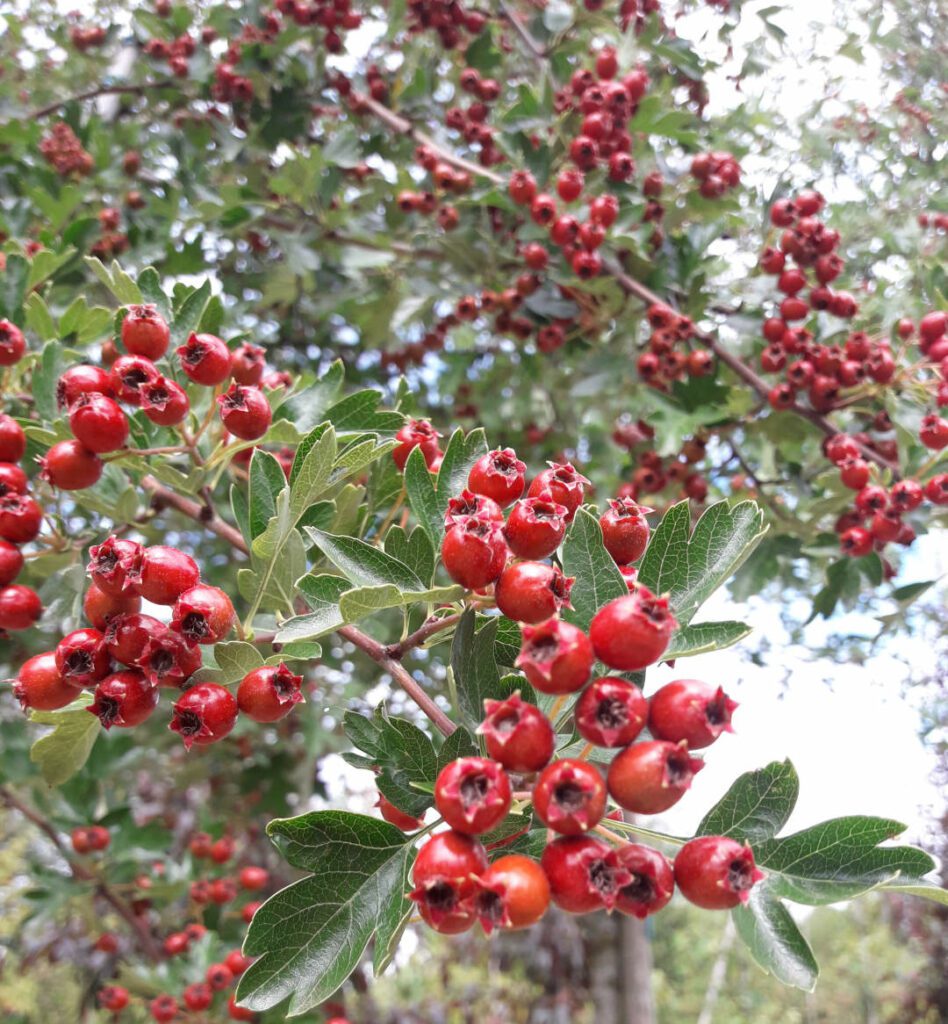
The Crataegus monogyna, or Common Hawthorn, is a mainstay of the British landscape, offering unparalleled ecological benefits and versatility in various planting schemes. For landscape architects and designers, this tree is a critical component of any project aiming to foster biodiversity, particularly in hedgerows, woodland edges, or wildlife corridors. Its ability to thrive in a variety of soil types and environmental conditions makes it adaptable to both rural and urban settings, a key consideration for large-scale planting initiatives.
From an ecological perspective, the Common Hawthorn is a powerhouse for wildlife support. Its dense, thorny branches provide excellent protection for birds, making it an ideal nesting site for species like blackbirds, sparrows, and finches.
This natural barrier helps shield nests from predators such as cats or larger birds, enhancing the survival rates of fledglings in busy urban or countryside environments. For architects looking to design landscapes that promote birdlife, Hawthorn offers both habitat and protection, making it an essential species for hedging or boundary planting in public spaces and estates.
In spring, the Hawthorn’s white blossoms burst into life, creating a stunning display that also serves a vital ecological function. These blossoms are rich in nectar, attracting pollinators such as bees, butterflies, and hoverflies. This makes Crataegus monogyna a critical species for promoting pollinator health in environments where natural habitats may be scarce, such as urban developments or farmland bordering public spaces. The dense floral displays ensure that pollinators have ample resources, especially in the early part of the season when food sources are more limited.
As autumn approaches, the tree’s red berries, known as hawes, become a lifeline for birds preparing for the colder months. Thrushes, blackbirds, and other berry-eating birds rely on these fruits to sustain themselves during migration or through the winter. This seasonal food source is crucial, particularly in large-scale rural projects or urban wildlife corridors where maintaining bird populations is a priority. For designers focused on biodiversity, the Common Hawthorn plays a year-round role in supporting both birds and pollinators, while offering a visually appealing and highly adaptable element to the landscape.
Hawthorn’s hardiness and low-maintenance qualities also make it an excellent choice for large-scale or long-term projects. Whether used as part of a hedgerow network, for woodland planting, or even in urban greening initiatives, Crataegus monogyna ensures that a landscape will support wildlife for decades to come with minimal intervention. Its adaptability to various climates and its natural resistance to many pests and diseases make it a reliable option for planners focused on long-term sustainability and wildlife support.
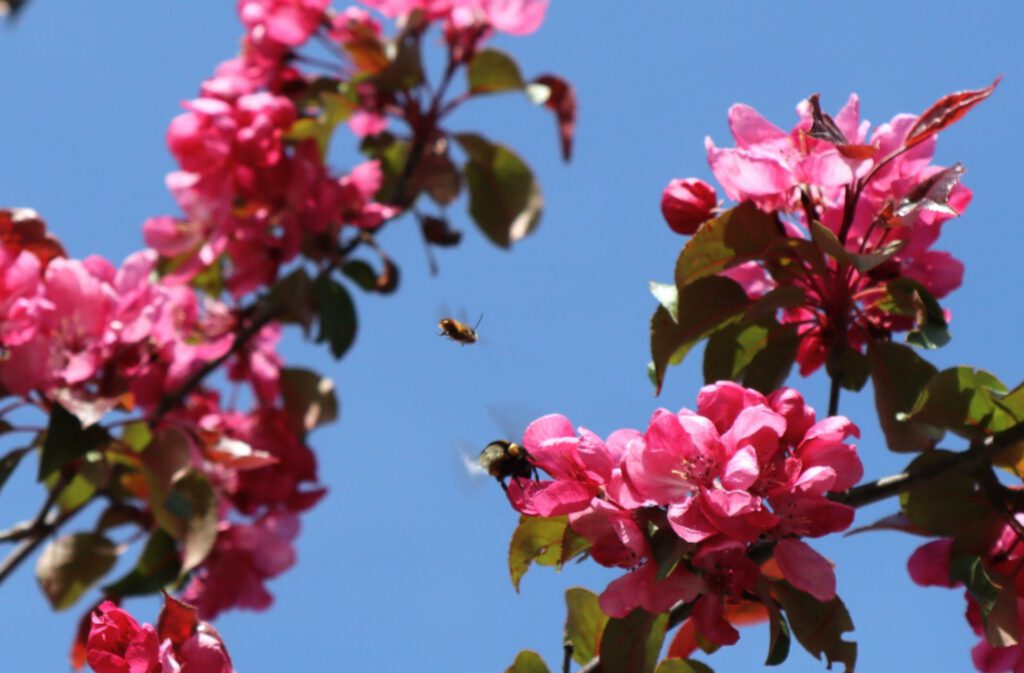
Malus ‘Evereste’ (Crab Apple)
For landscapers working on smaller-scale projects, urban parks, or residential developments, Malus ‘Evereste’, a variety of Crab Apple, is an exceptional choice. Its compact size, typically reaching heights of 4-7 metres, makes it an ideal fit for more confined spaces where larger trees may not be suitable. Despite its smaller stature, Malus ‘Evereste’ punches above its weight in terms of both aesthetic appeal and wildlife value, making it an indispensable option for those looking to enhance biodiversity in urban environments.
The tree’s show-stopping blossoms in spring provide an immediate draw for pollinators. Bees, butterflies, and hoverflies are drawn to the profusion of white or pink flowers, which offer ample nectar during a critical time in the pollination season. This makes Malus ‘Evereste’ a cornerstone species for supporting pollinator networks in urban and suburban spaces, where natural food sources may be limited. For landscape professionals looking to design pollinator-friendly environments, Crab Apple trees offer both ecological value and striking beauty.
As summer transitions to autumn, the tree’s ornamental fruits begin to form. These small, decorative crab apples are not only visually attractive but also serve as a critical food source for birds, particularly in the winter when other resources are scarce. Blackbirds, thrushes, and waxwings are particularly fond of the fruit, relying on it to sustain themselves through the colder months. This makes Malus ‘Evereste’ an essential part of any wildlife-friendly planting scheme, ensuring that local bird populations remain supported throughout the year. For public parks and smaller commercial developments, the Crab Apple offers a way to enhance biodiversity without requiring the space that larger trees need.
In addition to its ecological benefits, Malus ‘Evereste’ adds significant aesthetic value to any landscape. Its compact form, vibrant blossoms, and colourful fruit make it an attractive focal point in gardens, parks, and courtyards. The tree’s relatively low maintenance needs also make it a practical choice for urban environments, where ease of care is often a priority. Crab Apple trees are tolerant of pollution and can thrive in a variety of soil conditions, making them well-suited for urban greening projects that aim to increase tree cover in cities and towns.
For landscape architects and designers working in restricted spaces, Malus ‘Evereste’ offers the perfect balance of ecological and ornamental value. Its ability to support pollinators in spring, provide crucial winter food for birds, and maintain a compact form ensures that it remains a versatile option in any biodiversity-focused landscape design.
Quercus robur (English Oak)
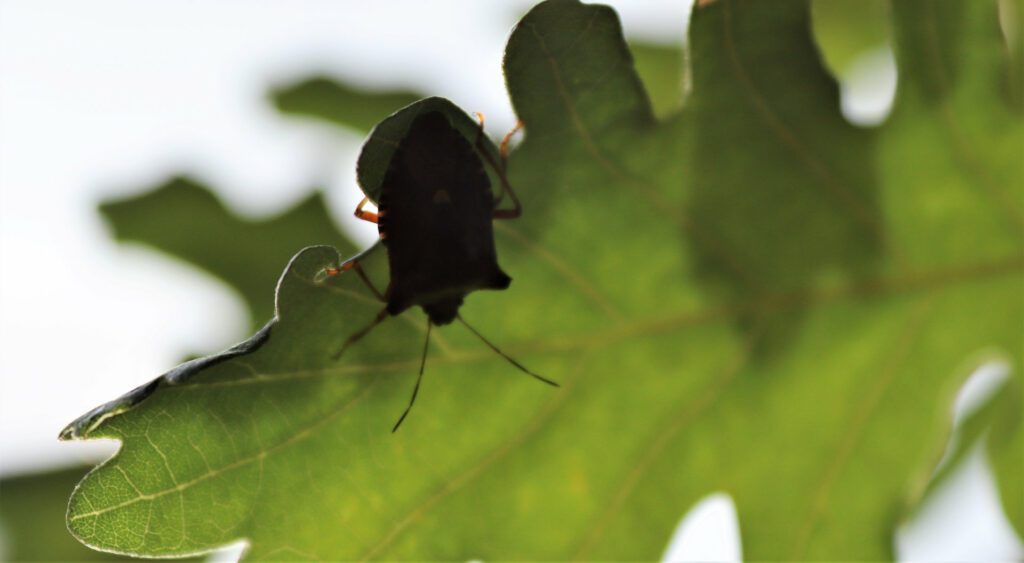
The Quercus robur, or English Oak, stands as a symbol of longevity and ecological importance in the UK, making it a cornerstone species for any large-scale landscape or biodiversity-focused project. For those working on larger estates, parks, or woodland restoration projects, the English Oak is unparalleled in its ability to support wildlife. Capable of living for several centuries, this majestic tree acts as a living habitat, offering long-term sustainability and biodiversity benefits that few other species can match.
One of the English Oak’s most valuable contributions to an ecosystem is its capacity to support a vast number of insect species—over 300 have been recorded on or around this tree. This abundance of insects creates a thriving food chain, benefiting a wide range of birds and small mammals.
Blue tits, great tits, and other insectivorous bird species rely heavily on the Oak’s insect population to feed their young, particularly during the nesting season. This makes Quercus robur a critical asset for landscapers aiming to enhance bird populations in a given area, particularly in larger green spaces where the tree’s expansive canopy can flourish.
Beyond its role in supporting insects and birds, the English Oak is also crucial for mammals. Its acorns become an important food source in autumn, feeding species such as squirrels, badgers, and deer. This seasonal abundance of food is vital for wildlife preparing for winter, making the Oak’s presence invaluable in maintaining a healthy and diverse ecosystem. For larger estates or woodland restoration initiatives, where space allows for the Oak’s considerable growth, this tree can serve as an anchor species that supports a wide variety of wildlife for generations.
Furthermore, the Oak’s size and longevity make it an ideal candidate for long-term ecological planning. Capable of reaching heights of 18-25 metres and living for over 1,000 years, Quercus robur is a legacy tree, one that will continue to support biodiversity far into the future. For landscapers looking to create enduring wildlife habitats, the English Oak offers both immediate and long-lasting benefits, cementing its status as a pillar of British natural heritage.
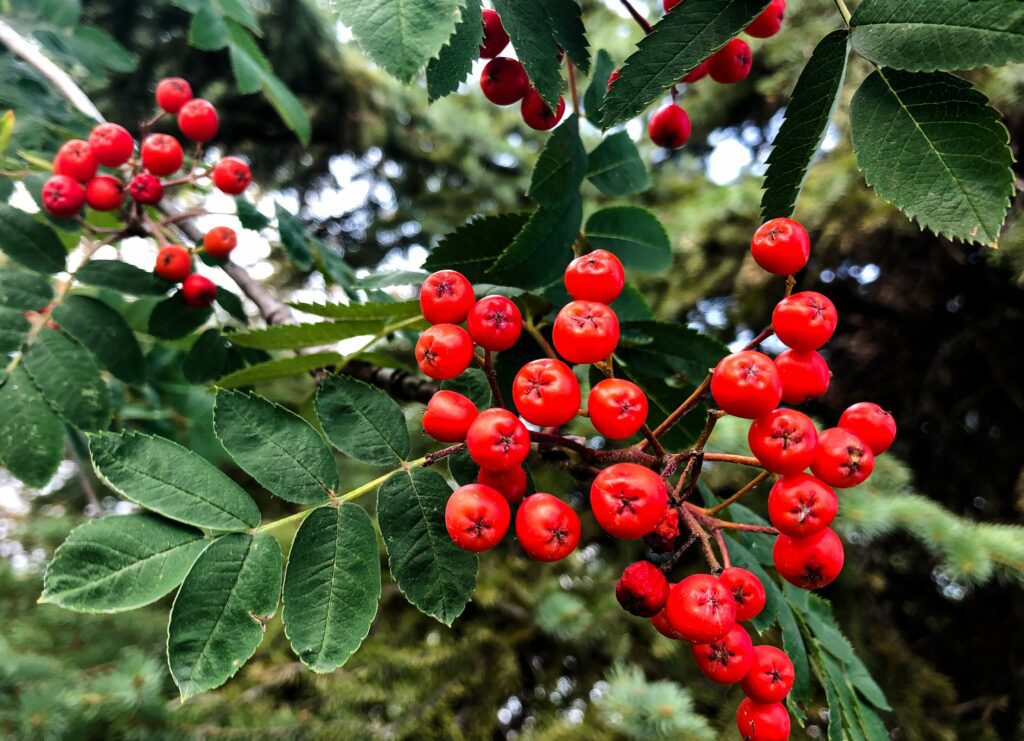
Sorbus aucuparia ‘Streetwise’ (Rowan)
The Sorbus aucuparia ‘Streetwise’, commonly known as Rowan or Mountain Ash, is a versatile tree that fits seamlessly into both rural and urban landscapes. This adaptability makes it a valuable tool for landscapers and site developers working across varied environments. Whether for urban greening projects, rural countryside planting, or enhancing biodiversity in public spaces, Sorbus aucuparia ‘Streetwise’ thrives in a range of conditions, offering both aesthetic appeal and significant wildlife support.
In spring, the Rowan’s delicate white flower clusters act as an essential food source for pollinators, particularly bees. As urban spaces continue to expand, creating environments that support pollinator networks is critical. Planting Sorbus aucuparia ‘Streetwise’ in city parks, public gardens, or even as part of urban streetscapes helps bolster these declining populations by providing early-season nectar. This contributes to healthier urban ecosystems, where the balance between human development and wildlife conservation must be carefully managed.
As the year progresses, the Rowan’s bright red berries emerge in autumn, offering a vital food source for birds such as blackbirds, thrushes, and waxwings. In environments where natural food supplies dwindle during the colder months, these berries play a critical role in sustaining bird populations. For planners aiming to support avian biodiversity in both rural and urban settings, the Rowan provides a reliable and visually striking solution.
The Sorbus aucuparia ‘Streetwise’ variety, in particular, is bred for resilience in urban environments, making it ideal for street planting or public spaces where pollution or poor soil conditions might limit other species. Its relatively small stature, typically reaching 5 to 10 metres, makes it suitable for projects where space is a consideration, yet its ecological contributions are considerable. For urban planners and developers, the Rowan offers a balance between functionality, aesthetics, and biodiversity enhancement.
Tilia cordata (Small-leaved Lime)
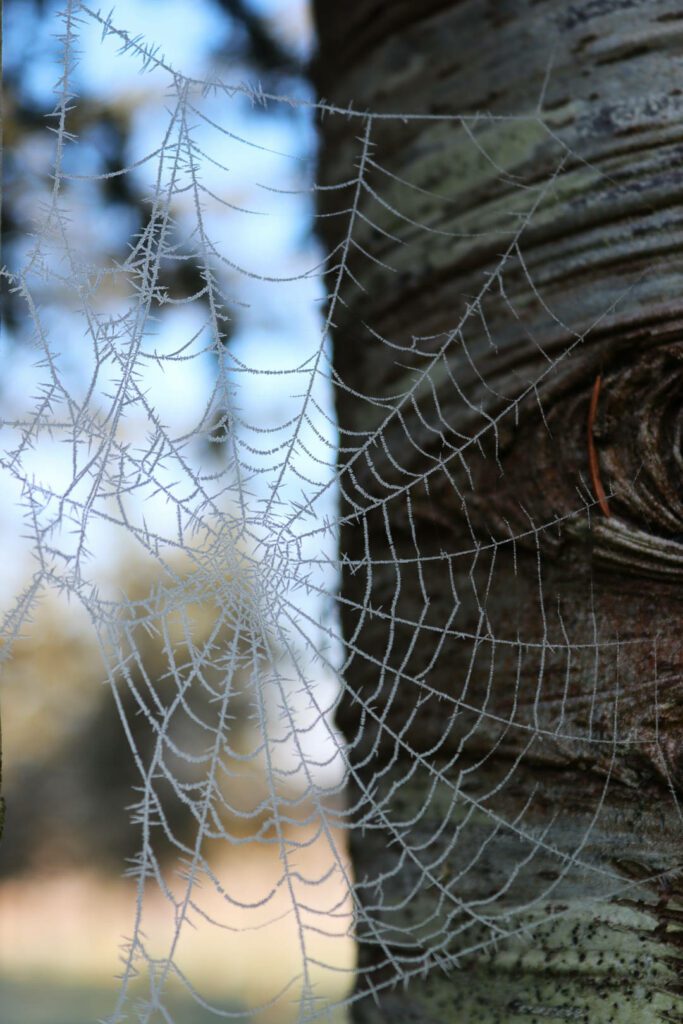
The Tilia cordata, or Small-leaved Lime, is a tree with deep ecological value, especially when it comes to attracting a wide range of wildlife. For designers working on public parks, gardens, or large estates, Tilia cordata offers year-round benefits, making it a valuable addition to biodiversity-focused landscapes. Its dense, lush canopy provides excellent shelter and nesting opportunities for birds and small mammals, while its summer blooms attract pollinators like bees and butterflies.
The fragrant, nectar-rich flowers of the Small-leaved Lime are particularly significant for pollinator species. In an era where pollinator populations are under increasing threat, Tilia cordata provides a vital nectar source during the summer months. The flowers draw in honeybees and other insects, supporting local beekeeping efforts and contributing to the wider ecosystem’s health. For landscape planners aiming to create pollinator-friendly zones, this tree offers both functional and aesthetic appeal.
The Small-leaved Lime also supports a variety of insect species that become a food source for birds, particularly during the breeding season. Its dense foliage creates an ideal micro-habitat for insects, which in turn attract insectivorous birds, enhancing biodiversity in the areas where it is planted.
This makes it an excellent option for large, open spaces where enhancing the local food chain is a priority.
Given its size—typically reaching up to 15-18 metres—the Small-leaved Lime is best suited for larger sites where it can grow to its full potential. Whether for public parks, private estates, or educational campuses, this tree’s combination of aesthetic beauty and wildlife support makes it an outstanding option for long-term ecological projects.
Ulmus ‘New Horizon’ (Elm)
The Ulmus ‘New Horizon’ represents a triumph in tree breeding, offering a disease-resistant alternative to native Elm species that have been decimated by Dutch Elm Disease. For landscape architects and urban planners, the disease resilience of Ulmus ‘New Horizon’ makes it a prime candidate for both rural and urban planting schemes, where long-term sustainability is essential. With its ability to withstand the devastating effects of Dutch Elm Disease, this tree is a resilient option for those looking to restore or protect Elm populations.
Despite its modern breeding, the New Horizon Elm retains much of the wildlife value of traditional Elms. Its foliage attracts a wide variety of insects, which in turn support birds, making it a valuable contributor to urban and rural ecosystems alike. Ulmus New Horizon (Resista Elm Range) share the same phrenology as the native Elm and as such is host to the extremely rare White-Letter Hairstreak Butterfly – an endangered species in the UK. The tree’s robust nature ensures that it can thrive in challenging environments, from polluted city streets to more exposed rural landscapes. This makes Ulmus ‘New Horizon’ a versatile and practical choice for planners looking to balance ecological goals with site-specific demands.
Ideal for public parks, street planting, and large estates, the Ulmus ‘New Horizon’ grows to around 15 metres and offers a manageable option for medium-sized projects where disease resistance and wildlife value are crucial considerations. By incorporating this tree into planting schemes, planners can help restore the Elm population in the UK, contributing to biodiversity while safeguarding against future disease outbreaks.
For landscapers, Ulmus ‘New Horizon’ provides a sustainable, resilient, and wildlife-friendly option, marking it as a vital component of any long-term, biodiversity-focused landscaping strategy.
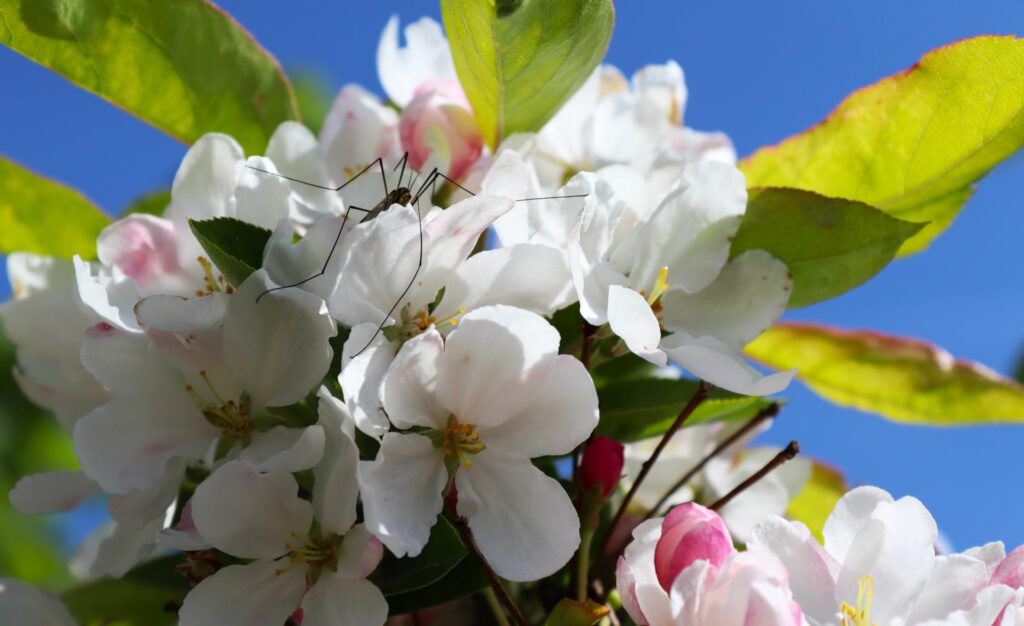
Conclusion
Incorporating trees that support biodiversity is not only a crucial aspect of environmental stewardship but also an essential practice for creating dynamic and sustainable landscapes. For commercial landscape designers, site planners, and estate managers, the right tree selection can have profound long-term impacts on the ecosystems they help shape. The trees highlighted here—ranging from the resilient Ulmus ‘New Horizon’ to the iconic Quercus robur—each offer unique benefits, from providing food and shelter for wildlife to improving soil health and enhancing the aesthetic value of any project.
Whether you’re working on a large-scale park, a wildlife corridor, or an urban greening initiative, these species ensure that the spaces you design will not only be visually striking but also rich in ecological value. By selecting trees like the Field Maple, English Oak, and Rowan, you are creating habitats that will attract pollinators, birds, mammals, and beneficial insects, fostering a thriving ecosystem in both rural and urban settings.
By planting for biodiversity, you’re not just adding trees to a landscape—you’re laying the groundwork for sustainable environments that support a range of wildlife species while enriching the spaces for future generations to enjoy. The right tree in the right place can leave a legacy that endures for centuries, creating a healthier, more resilient natural world.

